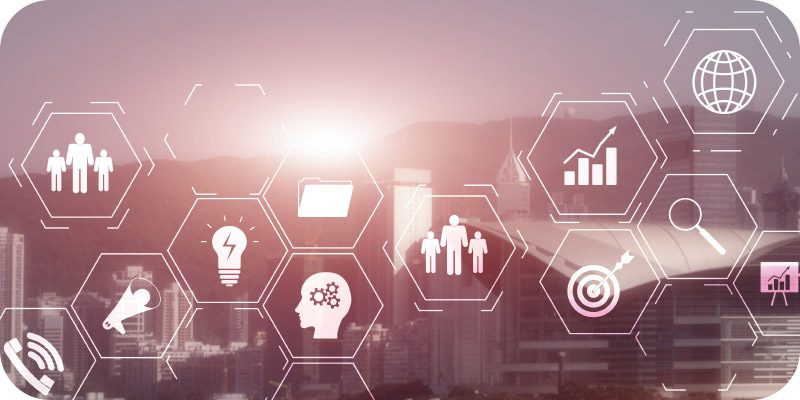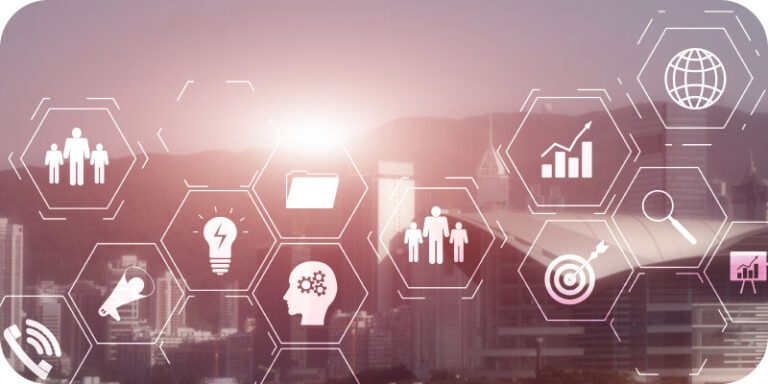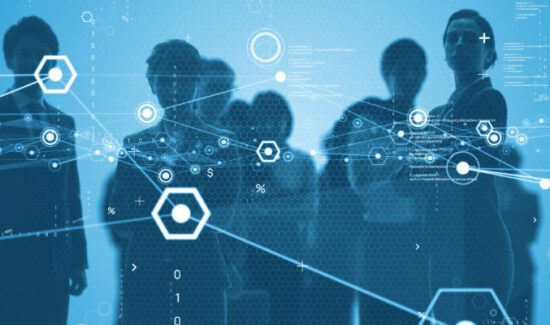The Impact of AI on the Education System

With AI’s ongoing presence and influence in the education system, the Solutions Review editors are examining how this emerging technology should (or shouldn’t) be used in this critical environment.
From adaptive tutoring to automated grading, AI is actively reshaping how we teach and learn. However, the technology’s continued growth introduces a suite of potential hurdles for educators and students alike to address. For example, will AI widen equity gaps, or close them? What skills do students need to thrive in the changing education system? How can teachers ensure their classrooms are learning the right skills in ways that will stick with them?
Unlike previous educational technologies that primarily enhanced existing methods, AI is reshaping the core structures of knowledge transmission, cognitive development, and social interaction within learning environments. What makes this moment particularly complex is that industries are implementing AI educational systems without fully understanding their long-term impacts on human cognition and social development. Unlike pharmaceutical interventions that undergo extensive testing before widespread adoption, educational AI is being deployed at scale while professionals still attempt to understand its effects.
With all that in mind, the Solutions Review team examines a few ways AI alters the human experience of teaching and learning, outlines the opportunities and challenges it can present, and considers how AI should (or shouldn’t) be integrated into the classroom.
Disruption vs. Opportunity: Redefining the Human Experience of Learning
The classroom transformation occurring through AI integration represents a fundamental shift in education-centric relationships that extends far beyond efficiency gains. We’re witnessing the emergence of what could be called “augmented learning,” where the traditional teacher-student dynamic evolves into a triangulated relationship involving human educators, AI systems, and learners.
The emerging triangulation creates new forms of cognitive interactivity. When AI tutoring systems can detect frustration patterns in student keystrokes or voice modulation, they enable teachers to intervene with emotional support when students need encouragement most. This technology doesn’t replace the human connection, but it does amplify the teacher’s capacity for empathetic response by providing data-driven insights into student emotional states that might otherwise go unnoticed in a classroom of thirty students.
However, AI in the education system is not without its disruption. The disruption manifests most profoundly in how knowledge authority is redistributed. For example, traditional classroom hierarchies, where teachers held primary informational authority, are giving way to more collaborative knowledge construction. Students can now fact-check claims in real-time, access multiple perspectives instantly, and engage with AI systems that provide alternative explanations when a teacher’s approach doesn’t resonate. This democratization of information access forces educators to evolve from knowledge gatekeepers to learning architects who design experiences rather than deliver content.
That shift can also create a “cognitive scaffolding dependency,” which can cause problems if left unchecked. Consider: when AI systems provide immediate answers, hints, and solutions, students may develop reduced tolerance for productive struggle and uncertainty. Without these essential experiences, students might not learn to wrestle with difficult concepts or sit with confusion, which will also prevent them from achieving the “eureka” moment when they finally understand a new subject. This represents a potential loss of metacognitive development that could have long-term implications for independent thinking and resilience.
The sensory dimensions of learning are also evolving. AI-generated visualizations, audio explanations, and interactive simulations create multimodal learning experiences that engage different cognitive processing systems simultaneously. This represents a shift from primarily linguistic and mathematical symbol manipulation toward more embodied and spatial learning experiences, but like many evolutions, a balance is needed. AI can augment the learning experience, even provide new avenues for exploratory arguments or research. But it can’t come at the cost of human ingenuity and problem-solving. As tempting as AI can be as a “catch-all” solution for students, it falls on the educator to ensure their students use it as a tool for their learning, not a replacement. Which leads us to the next point:
Building Guardrails and Trust: Navigating Ethical Imperatives
The most urgent ethical boundary revolves around cognitive autonomy preservation. AI systems that provide answers too readily risk creating learned helplessness in critical thinking processes. The boundary here isn’t binary but requires sophisticated calibration. AI should enhance student reasoning capabilities without substituting for them entirely. This means implementing what could be termed “graduated disclosure,” where AI systems provide increasing levels of assistance only after students demonstrate genuine effort and engagement with problems. It can function as something similar to a teacher’s assistant; that way, it can provide a sounding board for students that can give them a nudge in the right direction.
Creating those guardrails is easier said than done, of course. Algorithmic transparency in educational contexts demands more than technical explainability. Students and teachers need to understand how AI systems make recommendations and what underlying assumptions about learning, intelligence, and human potential are embedded in these systems. When an AI tutoring system suggests that students focus on computational skills rather than theoretical mathematics, the recommendation reflects particular beliefs about that student’s intellectual capacity and future potential. These assumptions must be surfaced and contestable. Better yet, they should involve the educator, who can use their expertise to decide whether the AI is correct in its understanding or needs adjustment.
The trust-building challenge involves creating feedback loops that allow the educational community to observe and evaluate AI system performance over extended periods. Unlike other domains where AI failures are immediately apparent, educational AI failures may only become visible years later when students enter higher education or the workforce, lacking particular cognitive capabilities. We must avoid that scenario, and doing so requires establishing longitudinal assessment frameworks that can detect subtle but significant impacts on intellectual development (with the aid of human insights, of course).
Bias mitigation in educational AI presents unique challenges because apparent equality doesn’t guarantee equitable outcomes. An AI system that provides identical resources to all students may perpetuate existing disadvantages if some students require different types of support to achieve similar learning objectives. This is one area where an “empathetic AI” mindset can prove invaluable, as it prioritizes embedding emotional intelligence and social context into AI governance, with transparency as the foundation.
Similarly, content filtering and recommendation systems in educational AI also raise questions about intellectual freedom and exposure to challenging ideas. Overly protective AI systems might shield students from controversial topics, dissenting viewpoints, or intellectually challenging material in ways that limit their capacity for independent critical analysis. The boundary between age-appropriate content curation and intellectual paternalism requires ongoing negotiation between educators, parents, and students themselves.
Equity and Access: Bridging or Widening the Digital Divide
AI’s impact on educational equity operates through multiple channels that can compound existing disadvantages or create unprecedented opportunities for leveling educational fields. The determining factors lie less in the technology and more in implementation decisions and resource allocation strategies.
Language barriers represent one area where AI demonstrates equalizing potential. Real-time translation capabilities and culturally responsive AI tutoring systems can provide high-quality educational content to students regardless of their primary language or their teachers’ linguistic capabilities. More significantly, AI can preserve and incorporate diverse cultural knowledge systems into the education system in ways that traditional standardized curricula can struggle to accommodate. This creates possibilities for multicultural education that validate different ways of knowing while providing access to dominant cultural capital.
When AI systems can provide expert-level subject matter support, pedagogical guidance, and personalized learning analytics, they can streamline teacher workloads by handling the time-intensive tasks involved in developing a lesson plan, organizing information, or distributing results to students. An AI can’t replace the need for proper training, but it can give educators more flexibility to engage with students in more meaningful ways.
For all its potential, the digital literacy prerequisite for effective AI utilization can create a secondary divide within technology access. Students who lack experience with sophisticated digital interfaces, prompt engineering skills, or an understanding of AI capabilities may be unable to fully leverage available AI educational tools even when they have technical access. A similar problem could arise from students in more rural areas who can’t access AI tools consistently. This requirement means that early AI exposure could become increasingly important for long-term educational equity.
How Teachers and Students Adapt: Redefining Roles and Developing Human-Centered Capabilities
Teacher empowerment through AI requires them to reconceptualize themselves from content experts to learning experience architects. The most successful AI integration occurs when teachers develop what could be called “orchestration skills,” where they coordinate AI capabilities with human insight to create learning experiences neither could achieve independently. This involves understanding AI strengths and limitations sufficiently to delegate appropriate tasks while maintaining responsibility for educational outcomes.
The evolution toward this hybrid adoption means teachers must develop fluency in prompt engineering, AI system evaluation, and algorithmic literacy. Teachers need to understand how to craft queries that elicit useful responses from AI systems, evaluate the quality and appropriateness of AI-generated content, and recognize when AI recommendations might be suboptimal for particular students or learning objectives. They also need to have an avenue for assessing how their students use AI to ensure the AI isn’t providing incorrect or counterproductive answers. This represents a significant professional development challenge that requires ongoing training and support.
Emotional intelligence and relationship-building capabilities become increasingly valuable as AI handles more routine instructional tasks. Teachers who excel in the AI-augmented classroom develop sophisticated abilities to read student motivation, facilitate peer interactions, and provide encouragement and challenge that promote growth mindset development. The irreplaceable human elements of teaching become more concentrated and visible when AI manages information delivery and basic skill practice.
Meanwhile, student adaptation will involve developing “cognitive complementarity” with AI systems. Rather than competing with AI or becoming dependent on it, successful students learn to leverage AI capabilities while strengthening their human cognitive processes. These include developing better question-asking skills, evaluating and synthesizing information from multiple sources, and maintaining curiosity and intellectual independence.
Critical evaluation capabilities become similarly essential as students interact with AI systems that can produce persuasive but potentially inaccurate or biased content. Students will need to assess information credibility, understand the limitations of algorithmic reasoning, and maintain healthy skepticism toward AI-generated conclusions. This represents a more complex form of media literacy that requires understanding the technical and philosophical dimensions of AI systems.
The development of philosophical and ethical reasoning capabilities represents perhaps the most critical human-centered skill set for the AI era. Students need frameworks for thinking about questions of meaning, value, and purpose that AI systems cannot address. This includes developing personal value systems, understanding the social implications of technological choices, and maintaining agency in decisions about living meaningful lives in technologically mediated environments.





